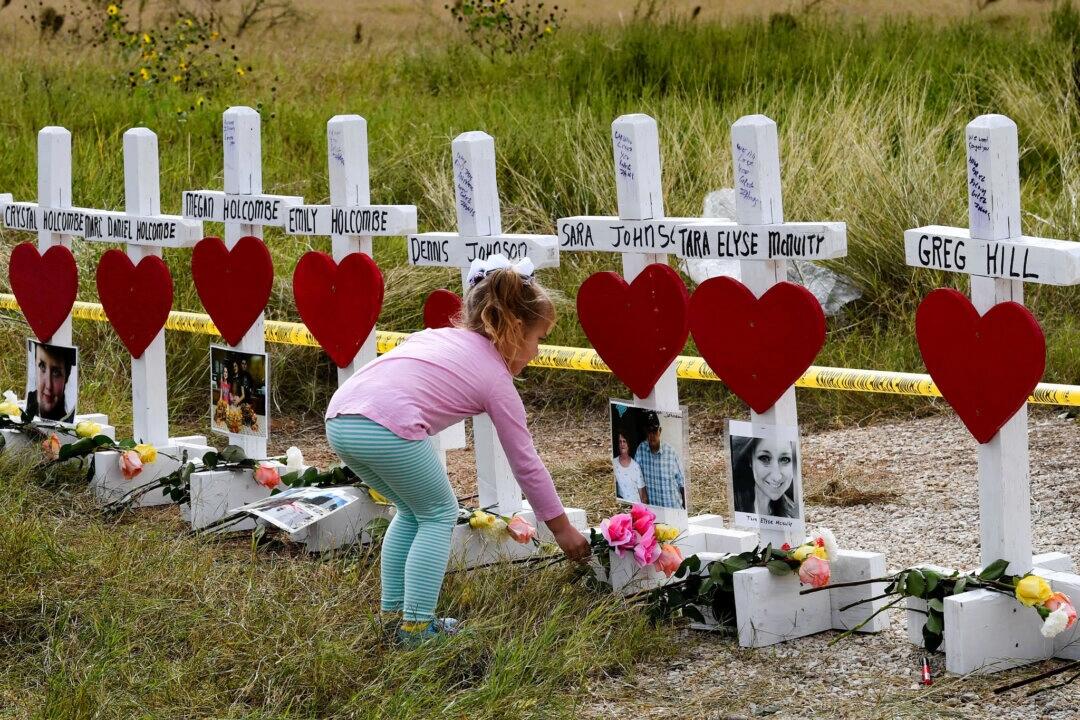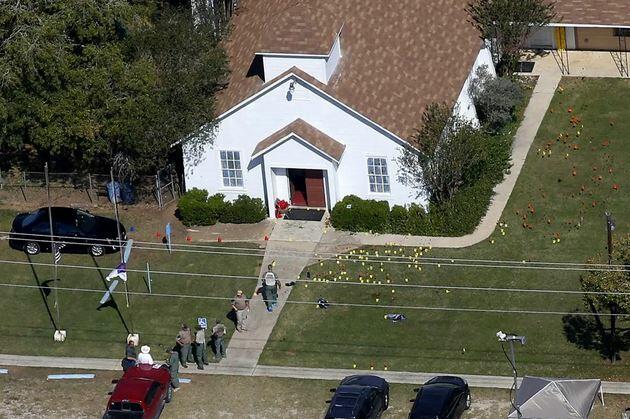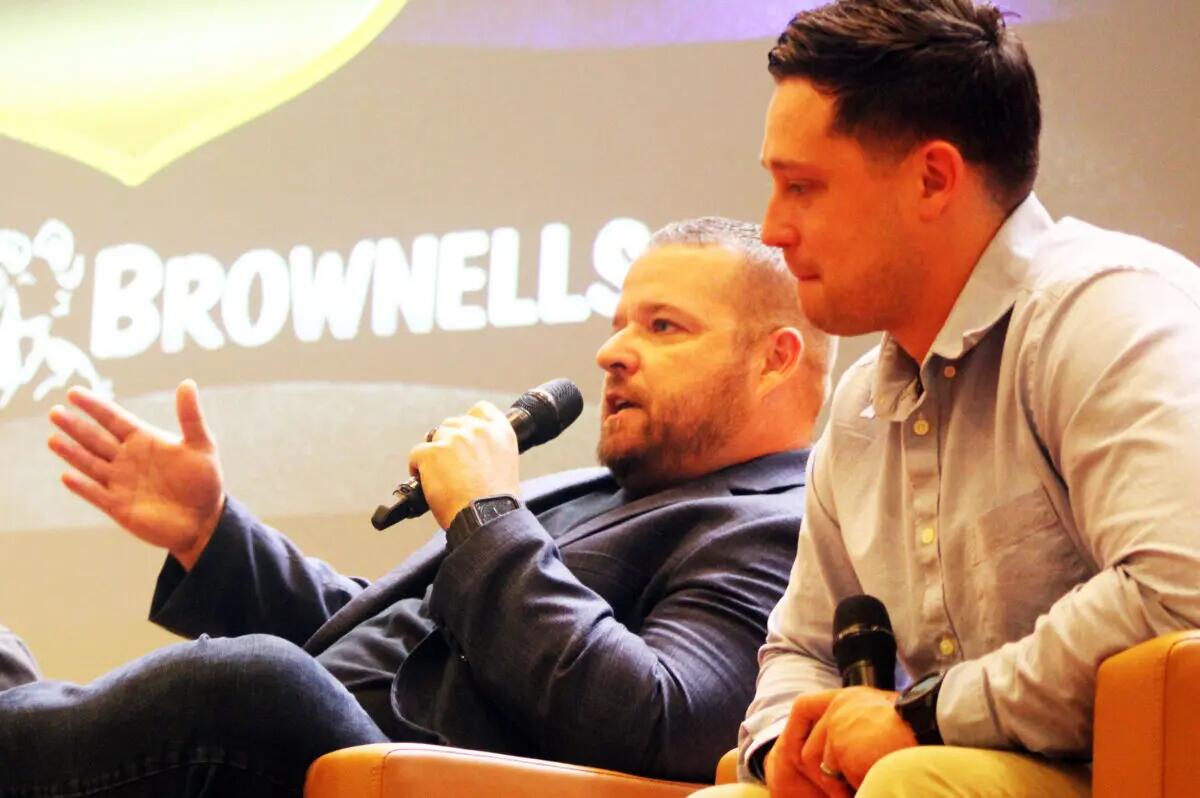Some Mass Shooting Survivors Want More Good Guys With Guns
Authored by Michael Clements via The Epoch Times (emphasis ours),
Editor’s note: The following story contains graphic descriptions of violence.
On Jan. 17, 1989, Rob Young happily walked to school sporting a brand-new pair of LA Gear tennis shoes he had received for Christmas. He still remembers how good those shoes felt on his 6-year-old feet.

Later that day, he sat under his desk and wondered if he was going to be in trouble over the blood soaking into his shoes. His best friend and fellow first-grader, Scotty, sat next to him, contemplating the gaping wound in his own leg.
“And that’s when he told me, ‘You know, Robbie, I think we’ve been shot,’” Young said.
The Stockton Schoolyard Shooting
On that foggy morning 35 years ago, as Young and his friends played kickball, a disaffected loner sprayed the Cleveland Elementary School playground in Stockton, California, with bullets from an AK-style semiautomatic rifle.
As children began running and screaming, Young felt something sweep his feet up over his head and then slam him to the ground as something impacted his chest. One of the bullets passed through his foot, narrowly missing the bones. A second bullet lodged in his chest, where it remains today.
Young said investigators believe the second bullet ricocheted off the ground before hitting him: a bullet of that caliber could have easily passed through his body if it hadn’t been slowed. Doctors determined that removing the bullet was too risky.
Five children were killed, and 30 other people, including a teacher, were injured.
The shooting was the impetus for California officials to write the state’s—and the nation’s—first ban on certain semiautomatic rifles, sometimes called “assault weapons.” But that was not the end of the response, the ripples of which are still being felt today.
Last September, President Joe Biden opened the first White House Office of Gun Violence Prevention. He recently signed executive orders regulating homemade guns and promoting active shooter drills in schools. Vice President Kamala Harris has promised to do more if she is elected to replace her boss.
“We know how to stop these tragedies, and it is a false choice to suggest you are either in favor of the Second Amendment or you want to take everyone’s guns away. I am in favor of the Second Amendment,” Harris said on Sept. 26 ahead of Biden’s signing the order.
“I believe we need to reinstate the assault weapons ban, and pass universal background checks, safe storage laws, and red flag laws.”
Many of the survivors of what has come to be known as the Stockton schoolyard shooting became champions of gun control.
However, Young took a different path, going on to a career in law enforcement. The best thing to stop a bad guy with a gun is a good guy with a gun, he said.
He points out that the Stockton shooter ended his rampage by shooting himself, but did so only after he realized armed police had arrived.
“I always realized that the gun was just a tool that a crazy man used,” Young said. “Would you ever blame a vehicle for a drunk driver who plows into a bunch of kids on a park bench? It didn’t make sense to me to blame an inanimate object.”
Sutherland Springs
Zachary Poston said he knows precisely what Young means. On Nov. 5, 2017, he, too, saw the power of a good guy with a gun.
That day, 17-year-old Poston went to church with his grandmother at the First Baptist Church in Sutherland Springs, Texas, as he had every Sunday for most of his life.
As a senior at La Vernia High School, he enjoyed computer games and flying the drone that recorded his school’s football games. He looked forward to enlisting in the U.S. Marine Corps after graduation.
Poston is tentative when asked to recall the events of that day, referring interviewers to court records.
“It’s been a minute,” he told The Epoch Times.
According to Poston and another witness, the congregation had finished singing a hymn and were waiting for the sermon to begin when bullets began punching through the church’s front door.
A convicted felon with a history of mental health issues and a hatred for religion was shooting through the church’s front door. He then moved down one side of the church, shooting through the wall and windows, forcing the people inside to take cover.
The murderer then moved inside the building, still shooting. Poston saw that a little girl in front of him was in the open, so he pushed her under the pew in front of him with his foot. The act drew the killer’s attention, and he raked Poston’s body with gunfire.
Poston’s grandmother threw herself over him.
“My grandmother took the bullets that would have killed me,” Poston said.
Across the street, Stephen Willeford had been resting in anticipation of being called to his plumbing job at a local medical facility later in the day.
He thought he heard someone tapping on his window. Then his daughter came into the room and told him something was happening at the church across the street.


As Willeford walked to his living room, he recognized the sound of gunfire. He told his family to call 911, grabbed his AR-15 and a handful of cartridges, and began loading a magazine.
He hadn’t had time to put his shoes on.
As he got to the front of the church, he saw the killer preparing to shoot a man in the head. He yelled to get his attention. The killer dropped his rifle and pointed a pistol at Willeford.
Willeford shot the gunman six times. The killer, who was wearing body armor, got into his car and fled.
Willeford flagged down a stranger named Johnnie Langendorff, who was in a pickup truck across the street. The two men chased the gunman, who ran off the road and shot himself several miles outside of town.
Poston’s grandmother, Peggy Lynn Warden, was one of 26 people killed in the massacre.
Both Willeford and Poston say that access to guns did not cause what happened in their rural Texas town. Poston points out that the rampage ended when Willeford returned fire. He said if he finds himself in a similar situation again, he wants to be able to stop the killing.
“I won’t go without [a gun] because I don’t want it to happen to me again or to whoever I’m around. I just don’t want it to happen to someone else,” Poston said.
Groups promoting gun control and gun safety disagree. They say the solution to the problem of mass shootings is a resurrection of the 1994 Federal Assault Weapons Ban implemented by the Clinton administration. In a recent email to its membership, Brady: United Against Gun Violence leadership stated that weapons like the one used in Stockton ensure high body counts in mass shootings.
“We know that a federal ban on assault weapons will save lives, and the majority of Americans support this measure. It is past time Congress listens to the American people and protects our communities by passing the Assault Weapons Ban of 2023,” the email reads.
Victims and Survivors
Other survivors of mass shootings who spoke with The Epoch Times said they are glad that their assailants met with armed resistance.
Massad Ayoob is a firearms instructor who has taught police techniques and civilian self-defense for decades. He has written extensively on firearms, combat techniques, self-defense, and legal issues. Ayoob spoke at the Gun Rights Policy Conference on Sept. 28 in San Diego.
He said that gun control activists capitalize on the emotional impact of the victims’ stories, while ignoring those who survive because someone was there with a gun to take down the shooter.

Michael Collazo agrees. He is one of the metro police officers who engaged a mass shooter at Covenant Christian School in Nashville on March 27, 2023.
Police bodycam video caught the moment Collazo and another officer shot the killer who had murdered three children and three adults at the school.
Collazo spoke during the Gun Owner Advocacy and Leadership Summit, sponsored by Gun Owners of America, in Knoxville, Tennessee, in August. He said school staff, including the principal, who was killed that day, had received active shooter training. The principal tried to stop the shooter even though she was unarmed, Collazo said.
Their stories are examples of heroism and courage, he said.
“They didn’t have to do that. They’re teachers; they signed up to teach kids, not to go into a gunfight,” Collazo told the gathering. “They had gotten some training prior to the incident occurring, and they did everything phenomenally.”
Gun Was Locked Up
The only gun on campus that day was locked in a car and inaccessible, Collazo said.
Meanwhile, Young said the Stockton shooting and his law enforcement experience have given him a unique perspective.
Several of his friends and former teachers are active in the gun control movement. He loves and respects them, he said.
Nonetheless, Young said that violent crime doesn’t come from a weapon; it comes from violent criminals. The most effective means of stopping violent crime is to stop violent criminals, he said.
A 2014 FBI analysis found that the average police response time after an active shooter report is approximately three minutes.
The Stockton schoolyard shooting was over in about 3 1/2 minutes. “Twenty-nine kids at my school, including myself, were shot before the law enforcement officers got on scene,” Young said.
“There are a lot of good people that work in our school systems that cannot carry their firearms. It’s their God-given right. It’s afforded by the Constitution.
“It’s a tool that can stop a madman.”
Want to know more?
NEVER MISS THE NEWS THAT MATTERS MOST
ZEROHEDGE DIRECTLY TO YOUR INBOX
Receive a daily recap featuring a curated list of must-read stories.


